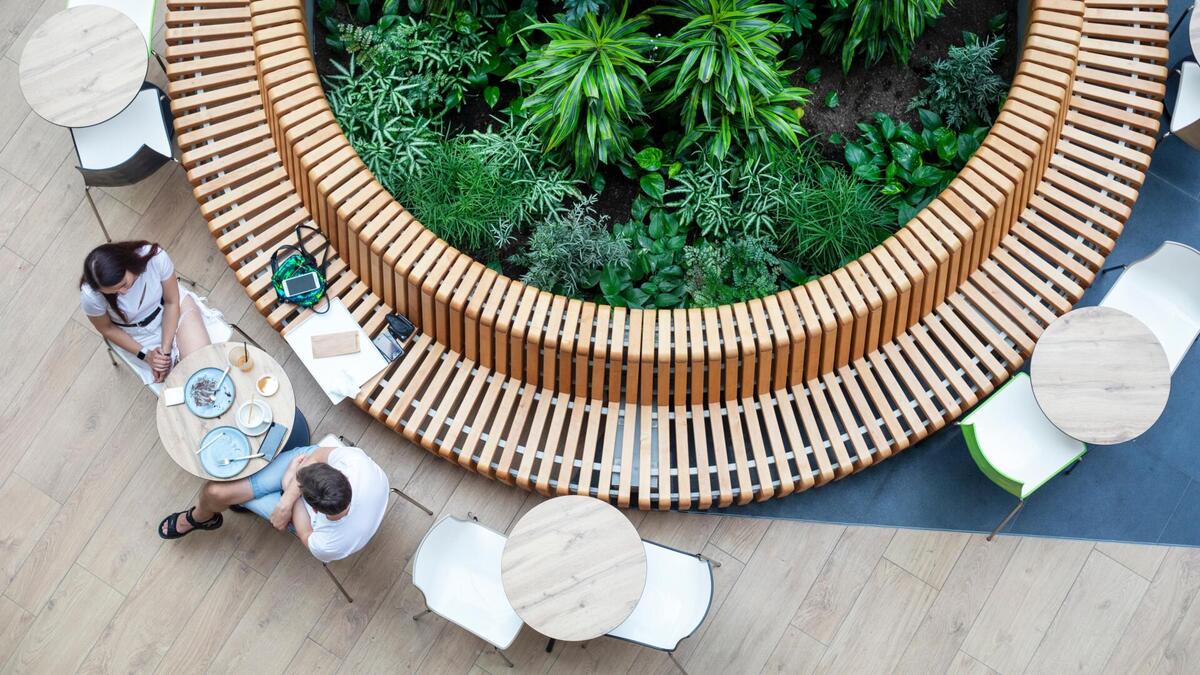This is also why the LEED (Leadership in Energy and Environmental Design) certificate from the workshop of the non-profit organization U.S. is used for their assessment all over the world. Green Building Council. The certification provides a framework for healthy, highly energy efficient and economical green buildings and has four basic levels – certified, silver, gold and platinum.
8. Tokyo Toranomon Global Square, Tokyo, Japan – LEED Gold
This high-rise building saves costs for many companies. Its designers designed it in such a way as to reduce energy costs by a third. They succeeded, for example, thanks to the installation of separate air conditioning systems on each floor.
The natural ventilation system, energy-efficient LED lighting and automatic dimming and motion sensor control systems also contribute to saving. The building also earned a gold certificate thanks to an effective rainwater reuse system.
7. The Crystal, London, Great Britain - LEED Platinum
The glass structure of the building uses six different types of high-quality insulated glazing with different transparencies to control solar thermal gains and minimize energy consumption.
The automatic weather monitoring system also ensures that LED lighting is used efficiently. In addition, the building uses only renewable energy sources for heating, which minimizes its heat costs.
6. Bank of America, New York, USA - LEED Platinum
The building provides up to 70 percent of its annual electricity consumption through its own power plant. It thus ensures not only heating, but also its own air conditioning. In addition, the designers used low-emission glass and curtain walls made of ceramic frits , which help reflect heat and thus minimize heat loss in the building. Thanks to this, this building was the first in New York to receive LEED certification.
5. Einpark, Bratislava Slovakia – LEED platinum
This office building received LEED certification in 2020. It was also helped by the green roof, which cools it and collects rainwater. Innovative cooling beams, external shading and intelligent air conditioning also contribute to energy sustainability.
As one of the few in Europe, the building can also boast a LEED Zero Carbon certificate, which confirms its carbon neutrality. In this way, it can save more than a million kilograms of carbon dioxide emissions annually. That's the amount of emissions a car would produce if it circled the globe 182 times.
4. Taipei 101, Taipei, Taiwan – LEED Platinum
This financial center building reaches a height of 508 meters with its 101 above-ground floors, making it one of the tallest ecological buildings in the world.
Obtaining the LEED certificate was not enough for its creators, and they are still working on reducing energy consumption. For example, they introduced low-flow water fittings with special control systems. They managed to reduce water consumption without affecting the comfort of the tenants.
3. Shanghai Tower, Shanghai, China – LEED Platinum
This 128-story tower was built by a developer in 2008 in the city's financial district. Despite its height, it manages to reduce its carbon footprint by 34,000 tons per year. It contains intelligent control systems that monitor electricity consumption. The result is a saving of energy costs exceeding 500 thousand dollars per year.
The building is designed to capture rainwater, be earthquake resistant and use wind energy. Wind turbines are located on it, which produce more than 350,000 kilowatt-hours of electricity annually.
2. Olympic House, Lausanne, Switzerland – LEED platinum
The new Olympic House in Switzerland is considered by experts to be one of the most sustainable buildings in the world. For example, solar panels and heat pumps, which use water from Lake Geneva to obtain renewable energy, contribute to this. In addition, the building's creators set themselves the goal of consuming 35 percent less energy than similar buildings while optimizing the health and well-being of its users.
1.Torre Reforma, Mexico City, Mexico – LEED platinum
Torre Reforma is currently the fourth tallest building in Mexico, reaching a height of 246 meters. Despite this, it also managed to obtain a sustainability certificate, for example thanks to the concrete foundations that cool the building and thus save up to 20 percent of air conditioning costs. Up to 94 percent of the spaces have natural lighting, and the building also cleans and reuses 100 percent of wastewater.







